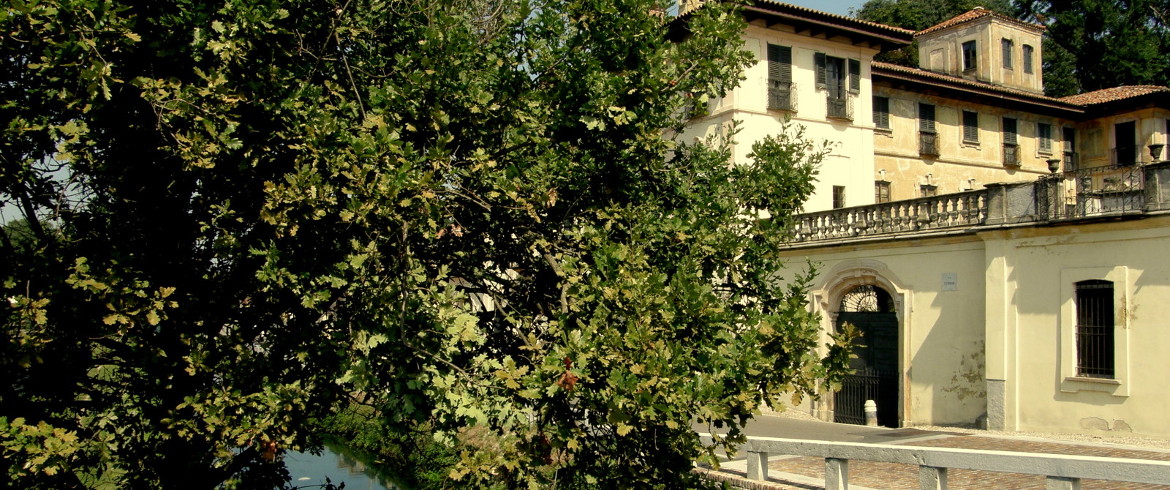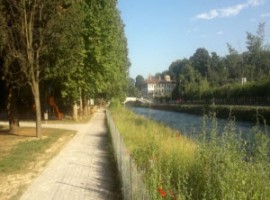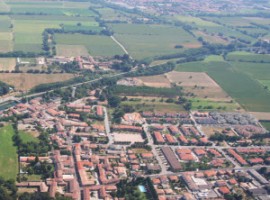The small towns and villages on the outer edge of big cities usually just become satellites: it’s the city where life plays out, and those small towns are just empty urban conglomerates where people go back to, to relax and sleep.
Cassinetta di Lugagnano, a tiny village just 26 km from Milan, was supposed to be exactly one of these towns, but things worked out rather differently: in 2005 the newly elected mayor of Cassinetta proposed a 10 year plan inspired by the idea of zero growth of private and public building.
The plan was subsequently approved and came to a close at the beginning of 2015 with a new plan now waiting to be approved.
EcoBnB.com asked the new administration about past and present challenges and what the future holds.
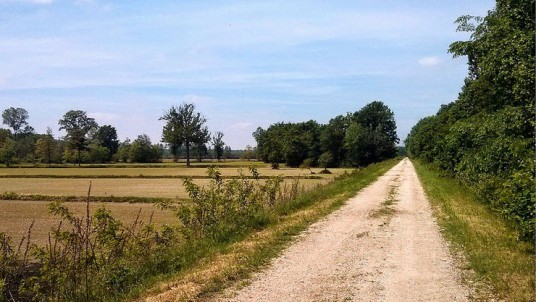
“Let’s work for zero growth” was definitely an unconventional motto in a world where “growth” and “progress” go hand in hand.
Yet the mayor Domenico Finiguerra was able to persuade his political team and even its opponents, and involve the whole community in the process through public events and meetings, resulting in his ambitious plan being approved in 2005.
People were asked a simple question: “Would you prefer to see the green and agricultural area around our town disappear, to be replaced by new buildings, but receive money in exchange, or would you rather that we redefined the local tax system and protect our village and the quality of life?”
In response to this, the majority of the inhabitants of Cassinetta di Lugagnano must have thought hard about their little village where, in 2005, around 1,200 people lived and knew each other by name. They must have contemplated the value of weekends spent walking and cycling along the channel docks. They must have thought of the town’s old villas owned by the noblest families of nearby Milan… and then project “zero growth” took shape and was a success.
- View over the Naviglio Grande photography via website of Cassinetta di Lugagnano
- Imagine of an old palace on the Naviglio channel water photography via website of Cassinetta di Lugagnano
- The park along the Naviglio Grande channel photography via the website of Casinetta di Lugagnano (fotografia via sito del comune)
Zero growth in three steps:
Three clear principles inspired the urban plan project and all the subsequent actions and decisions of the mayor’s staff over the next 10 years after its approval:
- Protection of the agricultural area (Cassinetta di Lugagnano is in the area known as Parco del Ticino, a green area covering two regional areas of Italy: Piedmont and Lombardy)
- Reduction of the use of public land
- Compatibility between building activity and the area’s existing resources
These guidelines resulted in a slow increase of urbanization -the number of inhabitants grew by around 3 % over 10 years-, full exploitation and restoration of the existing buildings rather than construction of new ones, the absence of big shopping centres, as well as a slight increase in small commercial units and the first signs of visitors from outside the area.
- Squirrels love to rest on the trees along the Naviglio Grande photography by Giovanni via Flickr
- An aerial view over Cassinetta di Lugagnano and its agricultural territory photography by M. Pucci
- Dragonfly, an ordinary view along the Naviglio Grande docks photography by L. Castellazzi via Flickr
Zero growth with benefits and risks
The real challenge was not just reducing soil consumption, but rather in increasing the quality of villagers’ lives and investing in concrete benefits such as:
- New cycle paths
- A nursery and primary school for toddlers and children
- Increase of green areas and protection of existing ones.
The mayor knew that his village had to confront decisions and actions that could negatively impact upon it though, and the first threat was the opening of a road connection of the A4 motorway to the direct road that leads to Milan.
So far the project for this road is far from being financed, with no clear date of when works will begin, but the threat remains in the existing Ansa plan (the Italian Road Authority).
The actual mayor, Mrs Daniela Accinasio, is very concerned a private fund could step in and the roadworks start abruptly annihilating 10 years of eco-friendly developpment of the agricultural and touristic units of the area.
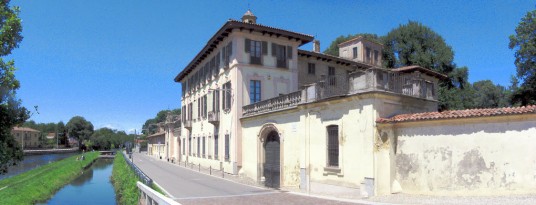
What the future will bring us?
The “zero growth urban project” inspired 10 years of the life of this happy village.
The next plan will be ready in 2015 and the new mayor told us that the basic principles of green area protection will be upheld, though some adjustments will be necessary.
We will wait for the new plan to be public and take advantage of the summer long days to have a ride along the Naviglio dock and ask Mrs Accinasio about it shortly, stay tuned.
Cover image: Cassinetta di Lugangnano, Lombardy, ph. by Barbara
